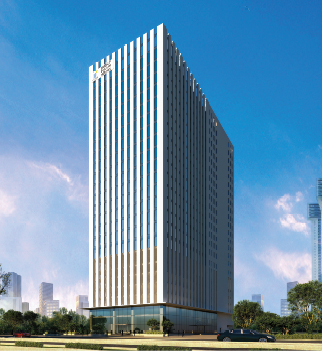
Commercial
What is hampering employee productivity in a post-pandemic setup?
September 16, 2022
While the employees were super driven to outperform their competitors in a work-from-home setup, there came a big announcement for all. After a long period of time, the new-normal a.k.a work from home is now re-orienting back to fun chit-chat sessions in the pantry, brainstorming in conference rooms and office banters. Numerous organisations are holding banners of “back to normal” and employees are now asked to give a legitimate reason for working remotely for more than a period of two weeks. When our brains get wired to work in a specific pattern repeatedly that is rather unproductive, there is a strong resistance felt while moving forward out of the comfort zone towards real professional progress and goal achievement. Hence, in a way, working from home was a saving grace for most of us.
Unfortunately, we are all subjected to experiencing a certain degree of fear about the uncertainty that stems from how we perceive this world even at the workplace. This could be linked to our past experiences that have tinted the lens we view the world from. Circumstances like getting a promotion, failing a big sales pitch or being the hero of a dramatic gossip stick with us no matter where we work or how many jobs we change. There are some deeply driven fears that can subside with effective measures, so let us understand some of the major ones in this post.
- Back to business: What is the first thing that strikes you when you think of going back to work in a post-pandemic situation? Employees are convinced that going back to work will cause discomfort in every possible way; from the first hello to the vibe of conference rooms, be it the slim-fit formals or carrying a backpack full of office essentials. In short, going back to business is all about working in groups, maintaining impressions and socializing. Unfortunately, not everyone is ready for it.
- Lack of engagement: Lack of engagement and a stronger commitment to the workplace has kept the employees feeling rather disassociated from the style of onsite functioning. It is observed by team leaders that employees with the least engagement feel very comfortable not going to work. What people fear is coming to work 5 days a week and getting burnt out. But going to the office 3 days a week can help reinstate boundaries between professional and personal life. It perhaps is the best way to balance out the unending Zoom call fatigue and all-day long upright posture.
- Hustle-hassle resistance: People fear that the work-life equilibrium will be adversely affected due to the formal desk setups alongside the hour-long commutes every other day. The highly standardized struggle of long time schedules at work along with the rush-hour commute is impartial for anyone, an associate to a CEO. The diverse workforce is in no way ready to embrace the physical and mental agony. This by far has proven to be the biggest resistance to going back to work after the global pandemic.
- Conforming to a safe-haven zone: Usually any announcement around “back to work” causes dread in everyone’s mind. There are a lot of issues faced by employees when they are physically present in the same space. Primarily, these issues revolve around the behavioural component and keeping a “check” on ourselves while following the norms. While working from home, individuals are free from social anxiety that links to forming wrong impressions, fear of failure, or primal fears such as rejection or being marginalized. The out-of-sight, out-of-mind approach keeps people relaxed and unbothered. Therefore these fears and limiting beliefs are inevitable and occur to most of us.
In conclusion, these irrational and yet highly unavoidable thoughts are specific to personal situations that can from social anxiety to limiting physical beliefs, being worried about what’s happening at home or to the freedom the WFH model gave us.
An occupational psychologist who contributed to guidance on post-pandemic work-related distress by the British Psychological Society, Janet Fraser, highlights that the irrationality behind these apprehensions is manageable and a receptive discussion with a team manager can help develop a positive perspective towards onsite work. Understanding that clear and honest communication is the most optimal approach to resolving your employee’s problems is the need of the hour. As a leader or manager, it is expected that you help your employees handle back-to-office anxiety. The uncharted territory can be rather overwhelming as the leaders aren’t just responsible for their management but also for their team.
References-
MUST READ
Looking for something specific?
We'd be delighted to help you.


































































































































































































































































































































































